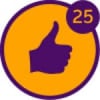How did you deal with the transition of walking with assistance to bedbound?

My LO can currently walk with assistance. She is "not allowed" to walk without that assistance due to her wandering and falling, as she will not use her cane or walker.
Since the diagnosis of this disease and not being able to feed herself very well, she has lost relatively quite a lot of weight and is now very light and frail. So, it is not majorly physically difficult to guide her and walk with her even when she has a lot of disorientation or is unstable.
I have thankfulness for what physical abilities she does have left that make it possible to do things such as taking her to the bathroom, walking her around, or taking her outside. However, my mind keeps going to the question of what and how these abilities may continue to decline.
So my question is, how did you handle that transition of gradual decline in walking abilities?
Comments
-
There are some steps in between. After his surgery in January, my FIL has gone from walking with some assistance, to walking with a lot of assistance, to just being able to stand and pivot to a chair (like a wheelchair or gerichair). Most recently, we are using the hoyer lift more and more to do transfers from the chair to toilet to bed, etc. I plan to get him up into the chair as long as we can, because he likes to roll around the room all day and he hate being stuck in bed. The gerichair reclines quite a bit so he can take naps with his feet up.
I don’t know what the point is people choose to go from a mobility chair to full time in bed. Hopefully, someone can chime in on that point.
0 -
oehlsena, is your LO on hospice yet? If not you can get a referral from their physician, or call a hospice yourself for an intake visit. Our mom went from walking to immobile very quickly because of a fall that fractured her hip, so I don't have a whole lot of advice on the slow decline. However, hospice was amazing with setting us up with a medical bed for Mom and super supportive as we tried to figure out the new "normal" of now bed-bound mom.
Best to you on your caregiver journey.
0 -
We are not at the bed bound stage, so I think about this as well and will be interested in the responses. Always something to learn.
There was a very short time when my mother was not walking at all, and we used a sit to stand to move her from bed to chair, etc. Since then, she has been walking but recently started having mobility issues again. She can walk short distances inside with someone by her side - never certain though when she will get tired and need to sit so a wheelchair is right behind her. For now, I try to have her retain as much ability as possible and work on her strength by walking whenever she can, working with physical therapy, doing exercises, etc. The wheelchair is used for when she is tired and walking will not be safe. Use a bedside commode instead of trips to the bathroom during the night. Right now she assists with transfers for the most part except when she is not feeling well or unusually tired. She's a healthy weight so it is difficult if she can't assist. Have a gait belt but haven't had to use that often yet. Also, have a hospital bed which is helpful.
So for us, after that first instance of not walking, the changes have been gradual and we keep adjusting. I think when she is no longer able to assist, it will be very difficult and two people will be needed and more equipment to assist.
0 -
Losing weight and losing mobility function(s) usually means you can quality for Hospice help. Virtually all Hospices provide all sorts of equipment to help with movement or being bedbound—including special beds, trays, wheelchairs, braces, etc—at no cost to you.
Hospice will teach you ways to help, and give the patient therapy if she can benefit. I’m not clear if she’s in a facility, but most facilities (all facilities IME) allow hospices to come in and help. You can ask the hospice to come and assess her, then Hospice will decide if she qualifies and talk more exactly about what they can do.
0 -
Thank you for that information!0
-
Definitely research hospice options in your area and ask for an evaluation as soon as you can. Dementia is terminal and is covered. Depending on the stage of the disease, the coverage may be temporary to deal with immediate issues, but you can always reapply when things decline again.0
-
We are in the midst of this dilemma. Mom has been walking with a walker solidly for about 2 years. She started to need assistance even with the walker for a year plus now and is on hospice. Shes declined enough that I thought we were going to deal with being bed bound. I’m having a hard time with that one. Now I must use the transfer chair to get her out of her bedroom. She couldn’t understand a stand and pivot when going from one seat to the next. She wouldn’t engage her legs in the process so holding dead weight up, trying to get her to pivot created many problems and falls, needing much help to get her back up. Because I’m not ready for completely being bed bound we have not ordered the hospital bed. Basically I trick mom with the walker. Somehow she will stand and engage her legs if the walker is in front of her. I get her up with a few steps and then put the transfer wheel chair behind her for a sit. She no longer uses the bathroom or a bedside commode because she’s completely incontinent and seems to have no idea she’s eliminating anything. Getting her to sit and pivot for the toilet was a nightmare and became unsafe also. I now change her diapers in bed, then get her up and in the living room, she also only has a bed bath.
It’s working for now… and she’s safe… what a relief. Still I’m just not ready for what’s next. Hate this!
I’m editing this with this thought: If it was me, I’d be getting her walker in front of her so she might start using with your assistance. Since you’re already there maybe you can help to steer it. That may keep her from being in bed all the time. My mom would start out sometimes without assistance which was unsafe… i think she finally learned that lesson but that feels like ages ago. In any event, I’ve been steering my mom for quite awhile since she has no idea where to go anyway. Her muscle memory for using the walker has helped in her care immensely, in keeping her upright.
0 -
Hi- my Mom gradually just stopped walking. We would use the walker for her to stand and we would pivot her on and off chairs, bed, wheel chair. This became too difficult for her and us as caregivers.
We switched to Sit To Stand- she did not walk but was able to grab on the bars for the Sit To Stand so we were still able to get her into chairs and on the commode. Sit to Stand helped us to at least get our Mom up and out of bed and allow her the activity of sitting- changing her environment.
Agree with hospice consult- that helped us tremendously with getting equipment and other supplies as our Mom needs changed.
Hope this helps.
0 -
I think M&m’s advice is great, especially if she has used a walker and has that muscle memory. The rehab PTs tried that with my FIL but in his case, he’d never used one and could not wrap his mind around it. His instinct was to push it way away from him almost falling over when trying to stand.
He will use the bathroom counter to get up from the toilet (when DH is taking him). I never could get a sit and stand from hospice, but thr hoyer lift is working great with the right sling. The sling we got can be put on and taken off easily on him sitting in a chair and makes for easy diaper changes so far as it is very open in the bottom area. The caregiver today was able to take off his diaper, clean him and lower him down onto a new diaper. It worked great.
0 -
m&m, you may want to reconsider the hospital bed. It may make things easier for you and it doesn't have to mean your mom is bed bound. I have one for my mom, and she is still walking. She does have mobility issues which are increasing but can still walk and assist with transfers unless she is very tired.
For some reason, it was very emotional for me when my mom's regular bed was dismantled and the hospital be went in so I do understand, but it does help with the day to day. I believe she is more comfortable. The bed raises and lowers so it is easier for her to get into and out of. Her old bed was too high. That is what ultimately made me make the switch. I can raise the head and foot of the bed too. The PT showed me how to use the bed to help transfer my mother into it so I am not doing a full transfer and injuring myself (which happened before that). I think it helped somewhat that my mom wasn't really aware of the change but it took some time for me.
I agree with everyone that hospice can be a great help. The company we were dealing with wouldn't allow physical therapy though. I had to get that myself.
0 -
We're also dealing with this transition to mom being bed bound. When hospice brought the hospital bed it was such a hard transition for me. I felt so guilty removing my mom's bed, which she loved. But the hospital bed has actually improved her life immensely, and it has made a huge difference in preventing my own continued back injury. Also, because it's more narrow, with railings on each side, it has enabled mom to turn herself more often during the night. That has been an unexpected and happy development.
0 -
fesk wrote:
m&m, you may want to reconsider the hospital bed. It may make things easier for you and it doesn't have to mean your mom is bed bound. I have one for my mom, and she is still walking. She does have mobility issues which are increasing but can still walk and assist with transfers unless she is very tired.
I really appreciate your reply.. I guess i’m most worried about her comfort in the hospital bed. The CNA is often recommending it. I assumed I’d get it when she was bed bound. Also the placement of it stops me (in the living room or bedroom?) I’m not ready for the living room. If they re-certify her this week it’s probably time to order it. (they most likely will as they’ve increased her stage to 7d now) My back is so tired. I now care for my 4 mo old grandson four days a week and that’s putting a different kind of strain on my back too.
Again thank you!
hmm yeh i don’t know how to do this quoting thing
0 -
M&M, I think you will love the hospital bed if you get one. Much more comfortable for them (and us) especially with that alternating air pressure pad. I have laid in it, and it is like sleeping on a cloud. I swear it is more comfortable than my bed, lol. Make sure hospice gives you one. My back has been saved by being able to raise the bed up. It helps so much.
If you have room in the bedroom, that’s what we did. We put up a sheet across the room and my FIL has half with his bed, clothes, supplies. We bought a cheap portable wardrobe to put his clothes in. He can get restless some nights, but the earplugs really work (for me). They keep me from hearing turning in the bed, but not so much that I don’t hear the bed alarm if he’s getting up.
0 -
Thanks May Flowers!
Is the air pressure pad something hospice supplied with the bed or is that an additional purchase?
0
Commonly Used Abbreviations
DH = Dear Husband
DW= Dear Wife, Darling Wife
LO = Loved One
ES = Early Stage
EO = Early Onset
FTD = Frontotemporal Dementia
VD = Vascular Dementia
MC = Memory Care
AL = Assisted Living
POA = Power of Attorney
Read more
Categories
- All Categories
- 595 Living With Alzheimer's or Dementia
- 321 I Am Living With Alzheimer's or Other Dementia
- 274 I Am Living With Younger Onset Alzheimer's
- 16.9K Supporting Someone Living with Dementia
- 5.6K I Am a Caregiver (General Topics)
- 8.2K Caring For a Spouse or Partner
- 2.7K Caring for a Parent
- 225 Caring Long Distance
- 156 Supporting Those Who Have Lost Someone
- 17 Discusiones en Español
- 5 Vivir con Alzheimer u Otra Demencia
- 4 Vivo con Alzheimer u Otra Demencia
- 1 Vivo con Alzheimer de Inicio Más Joven
- 12 Prestación de Cuidado
- 3 Soy Cuidador (Temas Generales)
- 8 Cuidar de un Padre
- 23 ALZConnected Resources
- View Discussions For People Living with Dementia
- View Discussions for Caregivers
- Discusiones en Español
- Browse All Discussions
- Dementia Resources
- 8 Account Assistance
- 15 Help













